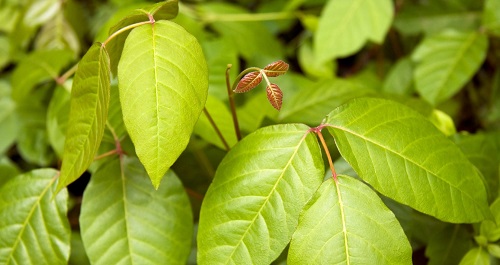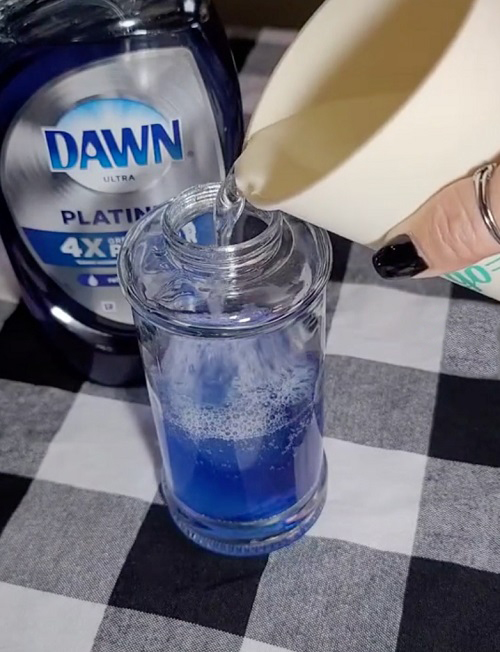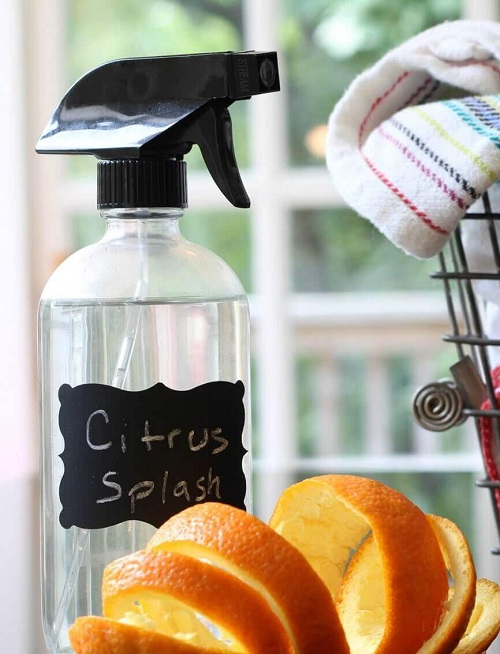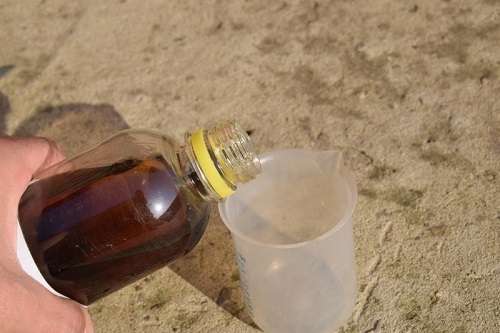Say goodbye to poison ivy forever with our curated list of easy and affordable DIY Poison Ivy Killer Recipes.

Are you tired of getting itchy rashes and blisters from the pesky poison ivy in your backyard? Look no further! With our DIY Poison Ivy Killer Recipes, you can easily make effective and affordable solutions to eradicate this troublesome plant. Say goodbye to uncomfortable itching and hello to a lush, green backyard with these easy-to-follow recipes. Let’s get started!
Here are the Best Homemade DIY Fungicide Recipes for Plants
How to Identify Poison Ivy
Before you proceed with How to Kill Poison Ivy – it is important to know how to identify it.
- Look for a plant with three leaves. Poison ivy typically has three leaves on a single stem. The leaves can be either shiny or dull, smooth or notched, and range in color from light to dark green, depending on the season.
- Check for clusters of small yellowish flowers or greenish-white berries. Poison ivy often has clusters of small yellowish flowers in the spring, followed by greenish-white berries in the summer.
- Look for hairy, reddish stems. Poison ivy can have stems that are reddish in color and covered in small hairs.
- Look for a plant growing in an unusual pattern. Poison ivy can climb trees or walls or grow as a ground cover.
- Check for the presence of an oily sap. Poison ivy contains an oily sap called urushiol. If you come into contact with it, you may develop an itchy, irritating rash.
Why You Need a Poison Ivy Killer Recipe
Poison ivy is a plant that contains a toxic oil called urushiol, which can cause an itchy and uncomfortable rash when it comes into contact with your skin. The rash can be quite severe and last for several weeks, making it important to get rid of poison ivy as soon as possible. Additionally, repeated exposure to the oil can lead to an increased sensitivity, which means that you may be more likely to develop a rash in the future.
So, to avoid any unnecessary discomfort and to prevent further exposure, it’s best to remove any poison ivy plants that you come across. Remember to wear protective clothing and gloves when handling the plants, and be sure to dispose of them properly. Here are some of the best DIY Poison Ivy Killer Recipes.
Here are the best fertilizer recipes from weeds
How to Kill Poison Ivy + Poison Ivy Killer Recipes
1. Vinegar and Salt Solution
One of the best DIY Poison Ivy Killer Recipes can be made with vinegar and salt. Mix 1 gallon of white vinegar and 1 cup of salt in a bucket. Stir until the salt dissolves, then pour the solution into a spray bottle.
Spray the solution directly onto the poison ivy leaves, making sure to cover the leaves thoroughly. Be careful not to spray any desirable plants, as this solution can kill any plant it comes into contact with.
Here are Amazing Vinegar Uses in Gardens and Homes
2. Borax Solution Poison Ivy Killer

Mix 10 ounces of borax with 4 cups of warm water in a bucket. Stir until the borax dissolves, then transfer the borax solution you have made into a spray bottle.
Make certain to spray the solution directly onto the poison ivy leaves and cover them completely. Again, be careful not to spray any nearby desirable plants as they will die too.
Check out these Homemade Hummingbird Food Recipes
3. Dish Soap Solution
Mix 1/4 cup of dish soap with 1 gallon of water in a bucket to make this Poison Ivy Killer. Stir gently to combine, and add 3 pounds of salt to the mixture. Pour the solution into a spray bottle and get ready to kill the unwanted poison ivy.
Directly spray the solution onto the poison ivy leaves, making sure to cover them thoroughly. This solution is less likely to harm other plants, but it may take multiple applications.
Take a look at the Top Dawn Dish Soap Uses in the Garden here
4. Boiling Water
Boiling water is a simple and effective way to kill poison ivy. Simply boil a large pot of water and carefully pour it over the poison ivy plant, making sure to cover the leaves and roots thoroughly.
This Poison Ivy Killer works best on small patches of poison ivy and may need to be repeated a few times to kill the plant fully.
Here are Fantastic Oak Tree Borers Treatment DIY Recipes
5. Citrus Oil Solution Poison Ivy Killer
Mix 1 cup of citrus oil (such as orange or lemon oil) with 1 gallon of vinegar in a bucket. Stir gently to combine, then pour the solution into a spray bottle. Apply the mixture directly onto the poison ivy foliage, ensuring comprehensive coverage of the leaves.
This Poison Ivy Killer may take a few applications to kill the poison ivy fully, but it gets the job done really well.
Looking for fertilizer? Here are the Best DIY Potassium Fertilizer Recipes
6. Glyphosate Solution
Glyphosate is a powerful herbicide that can effectively kill poison ivy. Mix glyphosate concentrate with water according to the package instructions, then pour the solution into a spray bottle.
Spritz the solution directly onto the poison ivy leaves, taking care to cover the foliage completely. Glyphosate can harm other plants, so be careful to avoid spraying desirable plants.
Check out these Money Saving Gardening Tips
7. Smother By Keeping a Cardboard or Paper Over Them
Did you know that you can get rid of poison ivy plants without using harmful chemicals? One effective method is to smother the plant by blocking out the sunlight and oxygen it needs to grow.
To do this, simply cover the poison ivy with a large piece of cardboard or plastic tarp. Let the cover stay in place for about a week, then check to see if the plant has turned brown and dried out.
Once it’s dead, you can remove it by hand (while wearing gloves and protective clothing, of course!) This way, you can enjoy your outdoor space without having to worry about pesky poison ivy!
Here are Unbelievable Things To Do With Newspapers in Garden
8. Apply Brute Force!
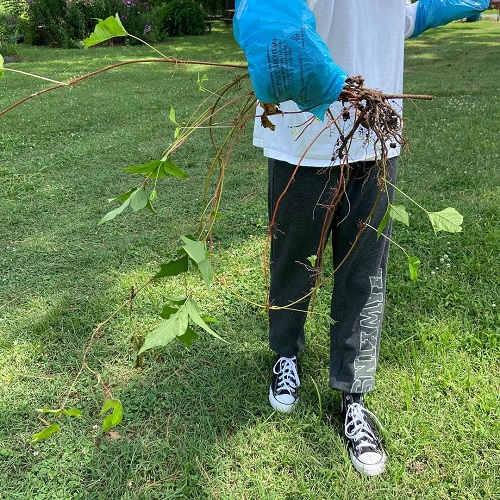
Sometimes the best way to deal with unwanted poison ivy is to use a little bit of brute force! Grab a pair of gloves and some long sleeves, and get ready to pull those pesky plants out by their roots.
Ensure you get the entire root system, or the poison ivy could grow back. If you’re dealing with a particularly large or stubborn plant, you might need to use a shovel or pickaxe to dig it up.
Once you’ve removed the plant, be sure to dispose of it properly (don’t compost it!) to prevent any accidental contact with the irritating oils. With a little bit of elbow grease, you can say goodbye to unwanted poison ivy for good!
Check out the list of household items that you can use in the garden here
9. Poison Ivy Killer – Gin!
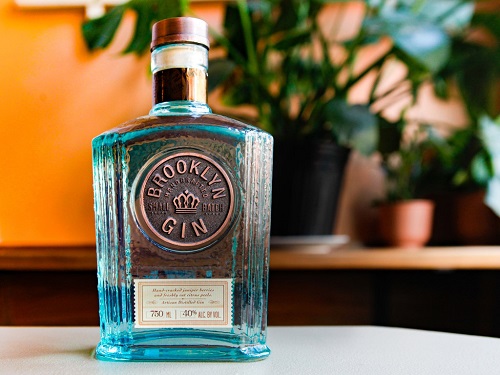
Have you ever struggled with getting rid of pesky poison ivy? Well, here’s a little secret you might not know – you can use gin to banish it for good! That’s right, with just a few simple ingredients, you can create a powerful Poison Ivy Killer that will make those poisonous plants disappear in no time.
All you need is 2 ounces of gin, 1 ounce of apple cider vinegar, 1 tablespoon of liquid dish soap, and 1 quart of water. Mix them together thoroughly, pour into a spray bottle, put on some gloves, and spray the solution onto the leaves of the poison ivy.
In just one day, you’ll start to see the amazing effects. And if you don’t, don’t worry; you can always repeat the process once more. So, what are you waiting for? Give it a try, and say goodbye to those irritating plants!
Check out Rubbing Alcohol Uses for Plants here
10. Bring in Angora Goats!
Did you know that bringing in Angora goats can be a natural and effective way to get rid of poison ivy? These furry little animals love to munch on the leaves and vines of the poisonous plant, making them a great solution for clearing it from your property.
Plus, their soft and luxurious wool is highly sought after in the textile industry, making them a valuable addition to any farm or homestead.
Not only are Angora goats an eco-friendly alternative to toxic herbicides, but they also provide a sustainable source of income. So, if you’re looking for a natural way to control poison ivy, consider bringing in these adorable and useful creatures!
Here are Ways to Encourage Wildlife into your Garden
11. Use Bleach
Using bleach to get rid of poison ivy on surfaces can be effective, but it’s not recommended for use on your skin. Wear protective clothing and gloves, and mix bleach with water in a 1:10 ratio.
Apply the solution to the leaves of the plant and let it sit for at least 30 minutes, and you will start noticing its effects.
Be careful not to get bleach on any plants or other surfaces you want to keep. If you come into contact with poison ivy on your skin, it’s best to wash the affected area with soap and water or seek medical attention if needed.

